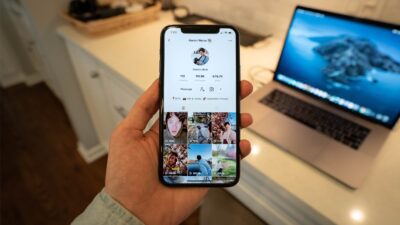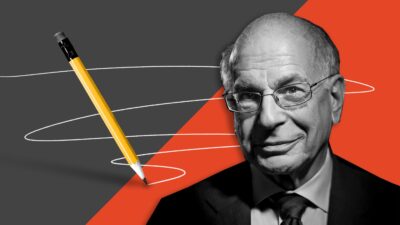Massimo Garbuio

A business strategy: what would Kim Kardashian do?
Influencers like Kim Kardashian are not just having fun on social media. They are playing a serious material game building large followerships. In the era of the influencer, it’s no longer enough for companies just to be ‘customer-centric’, hearing only what current customers want. Companies with an eye to winning new customers need to harness the business power of social media.
Hanging with Kim Kardashian in Paris
Some months ago I found myself standing on a Paris street shepherding an excited 16 year-old as she strained for a glimpse of her idol Kim Kardashian who was starring at the fashion show inside. While my 16-year-old has many admirable qualities, her desire to emulate the fashion and lifestyle of a Kardashian concerns me. Surely she would be better off accompanying me to the Musee D’Orsay, drawing inspiration from the masters? But then it struck me – she is learning how to be original and how to use that spark to be creative and impactful. (Indeed, she already started her own business.) And especially, together with hard work, how she could also become a successful entrepreneur.
If this curiosity is good for a teenager, perhaps it might also benefit business: board members, CEOs, and managers at any level – we all need to look beyond our well navigated ‘traditional’ learning forums. It’s not just teenagers who look to role models for inspiration – if we’re honest, most of us do. And if a business doesn’t understand its customers’ role models, how can it expect to understand its customers?
An executive’s fundamental competitive advantage is to make predictions about what the future looks like. Popular culture is not only a way to engage with customers. It can also be a means of learning about future customer habits. Some basic principles are constant: customers want to be delighted, they want help making decisions when they don’t know much about their choices, and they want to feel good after the purchasing experience.
An important part of an executive’s role is to connect the dots and recognise trends and patterns while they are still emerging – not after they are synthetised in a glossy report or powerpoint deck.
Long-time editor-in-chief of Vogue, Anna Wintour is the ultimate curator of modern taste. She has shown an ability to sample various seemingly conflicting cultures and meld them into a fresh ‘must have’ product. Wintour understood very early the importance of role models in framing aspirations. Wintour’s cover picks are both relevant now and spectacularly ‘futuristic‘ in asserting a look she is confident will also be relevant with her upcoming readers. Her choices shape important conversations of our time by giving space to people pursuing fresh ideas – that ultimately come to reflect the world we live in.
Planning for impact
A customer-centric program improves how a corporation deals with its customers. And that’s fine for most organisations, and for most people within an organisation. In many traditional settings this is a valuable approach. But to be at the forefront of change, to really envisage performance and competitiveness 3-5 years away, a customer centric approach is hardly enough. That’s hygiene, not impact.
The Henry Ford anecdote is still valid: if asked, customers will simply want faster horses. Let me update that story: just a few years ago car owners would not have considered purchasing a new car online, let alone remotely customising their vehicle without even taking a test drive. Elon Musk completely re-imagined the purchase process to the extent that many people’s first experience of their new Tesla is when they drive it away from the warehouse.
I spoke At Harvard Business School yesterday for a class called HBS Moving Beyond DTC. The class’s assignment was to learn about @skims, so my partner Jens and I spoke about our marketing, our challenges and our greatest wins. pic.twitter.com/42FiWDlmaj
— Kim Kardashian (@KimKardashian) January 21, 2023
Unlocking the future with social media
Influencers are, by definition, ahead of the crowd: the crowd will follow, but there is a lag. A smart executive, like Wintour, steps into the ‘lag’ and populates it with their interpretation of an idea: being in front of the trend allows you to own its commercialisation. Companies need to embed an ‘innovation mindset’ into every level of operation, including at board level.
Senior executives and board members responsible for a company’s long term performance need to ask themselves if they are doing enough to stay on top. Trips to Silicon Valley and Israel are valuable but there are other powerful learning opportunities to be had closer to home. Observing future customers behaviour with fresh eyes, mingling with their aspirations and making those desires tangible will also make companies a lot of money.
Social media can reveal the cultural conversations of an era. An astute business leader needs to join the dots before others get the picture.
Don’t discard what might seem unusual to you (such as the new ‘Kardashian’): in the social media age outstanding individuals will have a huge impact on future customers. They provide consumption and lifestyle aspirations.
Executive postscript
To reach future customers spend less time studying the past or asking customers what they want, and more time getting close to the world around you.
While much can be learnt from history (later, in another city, my 16-year-old dragged me to the V&A to see the Fashion in Motion exhibition) as a senior executive you have a responsibility to future customers and the long-term sustainability of your business.
Making sure the present customer experience is as pleasant as possible is vital for any organisation, but equally important is looking to where your customers might want to be. You need to know what those teenagers, those future consumers, are looking towards – even if at first you don’t get the appeal. Are there new technologies or improved engagement strategies you can implement which can collect this information? Could you change the organisation’s use of social media so that it becomes a source of strategic insights, as opposed to mere marketing?
What data can you collate that will tell you where customers might want to be in the future? How can you learn what that future will be when the customers themselves can’t yet put it into words? Had I asked my daughter why it was so burning that we see Kim Kardashian walking out of a show, all I would have gotten was an eyeroll.
But, to her, it was clearly meaningful. That means it needs to be important to me too.
For a more detailed insight how board members can drive productive change see Innovation in the Boardroom: Rising to the Challenge? a joint publication of the University of Sydney Business School and the Australian Institute of Company Directors.
Image: Giorgio Trovato and Kim Kardashian
Dr Massimo Garbuio is an Associate Professor in Entrepreneurship at the University of Sydney. He's passionate about helping students and business leaders become master strategists.
Share
We believe in open and honest access to knowledge. We use a Creative Commons Attribution NoDerivatives licence for our articles and podcasts, so you can republish them for free, online or in print.







